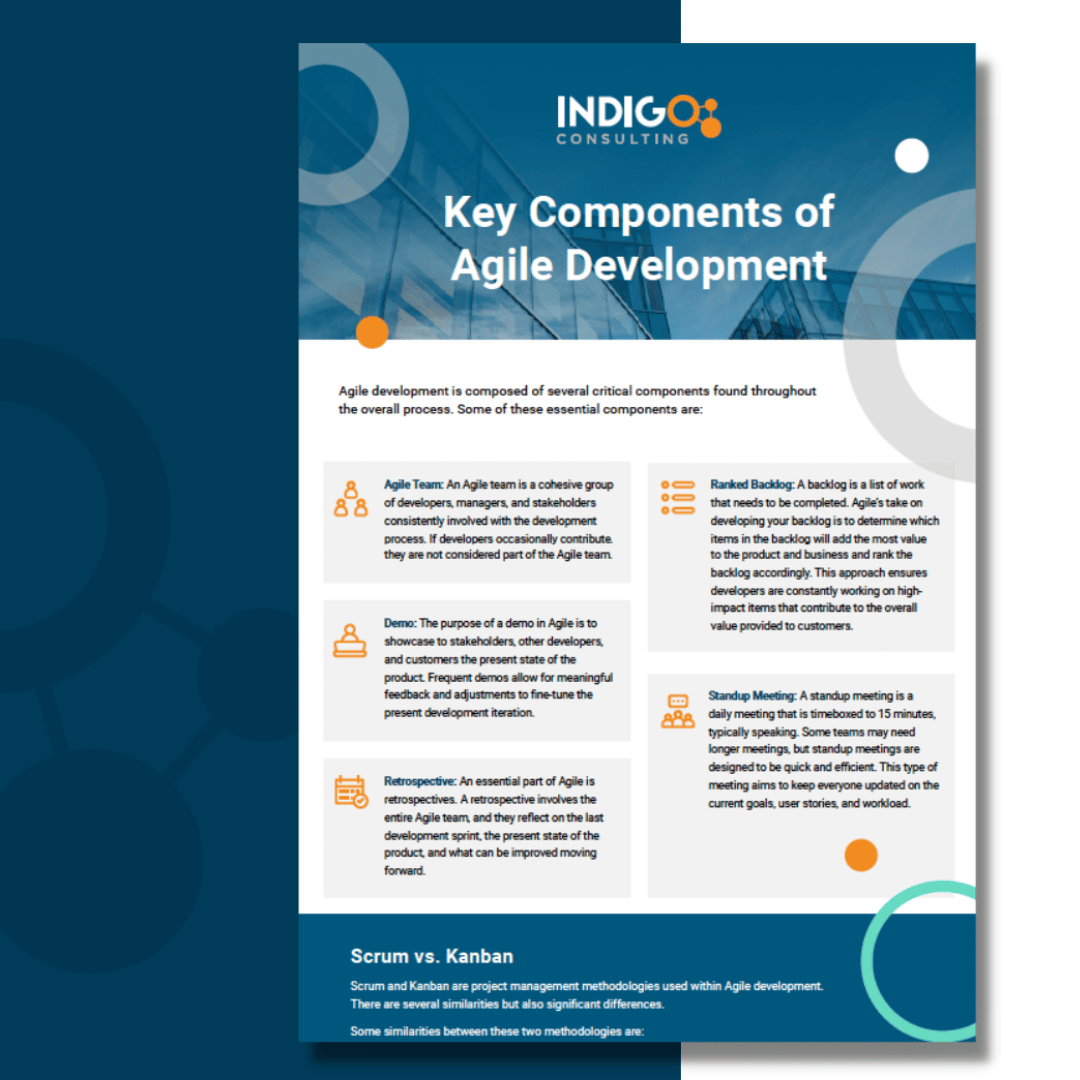
Customers and employees generate significant data and require secure access to sensitive systems. So how can organizations provide the security and privacy to the modern world needs?
Customer Identity and Access Management (CIAM) and Identity and Access Management (IAM) use the same technologies to accomplish different needs for managing internal and external identities.
CIAM focuses on managing external identities to provide a frictionless experience and retain customers without jeopardizing security. CIAM solutions prioritize scalability so that an organization can grow from a few thousand customers to millions of customers while still ensuring scalability.
On the other hand, IAM in reference to internal identities, is focusing on the workforce with an emphasis on security, controls, and compliance throughout the entire infrastructure. Access and identities must be managed across different network boundaries, address joiner-mover-leaver use cases, all while providing controls to adhere to regulatory requirements.
It’s estimated that the combined (C)IAM market will grow from US$14.5 billion in 2022 to US$25.6 billion by 2027, representing a CAGR of 13.7%.
Similarly, the CIAM market is expected to increase from US$8.6 billion in 2021 to US$17.6 billion by 2026, a CAGR of 15.3%.
These figures indicate the growing concern among consumers about privacy, which coincides with organizations placing a renewed emphasis on security at all levels. Additionally, this growth represents the value IAM and CIAM provide organizations across all industries.
You’ll be tasked with managing internal and external identities throughout the life of your business. The decision you’ll need to make is to use problematic legacy tools or embrace leading-edge solutions to implement better identity and access management.
Why are organizations investing in new ways to manage and secure users’ access and data? This investment is due to both the rise in cybercrimes and the increased customer emphasis on privacy. It’s become clear legacy methods are no longer sufficient, and it’s time for an upgrade.
Keep reading to learn how identity and access management adds significant value to organizations.
What is Identity and Access Management in General?
Before diving into the differences between managing employee and customer identities, let’s briefly discuss the practice in general.
Identity management and access management are two long-standing practices in IT that have recently merged into the overall field of IAM.
Access management is a category of technologies that determine which IT assets a specific user is allowed to access, alongside what they’re allowed to do within them.
Identity management describes systems and technologies that manage the life-cycle of an identity, also referred to as joiner-mover-leaver use cases. The concept of identity management leverages middleware platforms to take data from authoritative sources, apply business logic to transform the data and finally store the data in target repositories or systems. The data stored in an identity management system will vary based on an organization’s needs and often includes job titles, usernames, passwords, and direct reports. Subsequently, target systems will have application data that will be pulled into the identity system on-demand
You can see how IAM solutions evolved from these two legacy concepts to provide increased security and data protection.
What is Identity Access Management (IAM)?
IAM typically refers to managing internal identities, whereas CIAM refers to external identities. Internal identities have different requirements from external customer identities. Therefore, IAM focuses on managing these internal identities, such as employees’ and managers’ information and access levels.
Let’s explore the technologies and benefits of embracing a leading-edge IAM solution, some of which vary regarding IAM vs CIAM.
Core IAM Technologies
An IAM system is typically described as a single system, but in practice, it’s a series of technologies that work together to accomplish the overall goal of IAM. These technologies are typically provided by distinct vendors and consist of individual systems, and each contribute new functionality to IAM. Some of the core technologies involved are:
- Context-based Authorization
- Single Sign-On
- Lifecycle Management
- Identity Behavioral Monitoring
- Centralized, Universal Directories
- Authentication Protocols, including MFA
- Federation
Combined, these technologies provide IT with greater control over internal identities and what they can access within the ecosystem.
Benefits of IAM
Why are companies switching to standard-based IAM solutions? And why should you look to invest in a more future-proofed replacement to your existing legacy systems?
The benefits of modern IAM solutions justify the costs. These benefits include:
- Simplify the end user experience: You might think IAM would create a more complicated user experience, but in practice, the implementation of single sign-on greatly simplifies the experience. No more logging into a variety of systems throughout the day.
- Lays the foundation for zero-trust: IAM by itself is not zero-trust architecture, but implementing it gives IT a foundation to build upon to enact the principles of zero-trust. By itself, IAM still improves security through context-based authentication and MFA.
- Reduces IT time and costs: IAM assigns every user a specific identity, and from there, IT can manage roles on an identity basis. This workflow prevents setting permissions for every user when a policy change is made, or a new system is adopted.
These benefits also apply to CIAM but are more substantial in an internal identities context. These users typically have greater access to systems and undergo more frequent changes in access levels.
What is Customer Identity Access Management (CIAM)?
Managing customer identities is of the utmost importance due to data privacy regulations and an increasingly prevalent concern among consumers about how their data is stored. A CIAM solution is designed to keep customer data secure at every step while maintaining compliance with applicable regulatory requirements.
A CIAM system is designed to both manage and protect external customer identities. Customer identity isn’t necessarily exclusive to your paying customers but extends to any party outside your organization, such as partners, contractors, or suppliers.
Core CIAM Technologies
The same IAM technologies we mentioned above are also applied to CIAM, but managing customer identities introduces new systems to cater to the needs of managing and external users.
- User Registration
- Branding Control
- Consent Management
- Profile Personalization
You can see how CIAM introduces the capabilities for a customer to register, set up their profile, and provide consent for data privacy and protection. Additionally, companies can completely brand the CIAM interface for a consistent customer experience rather than relying on the vendor’s branding.
Benefits of CIAM
Why should organizations’ invest in new CIAM systems in addition to IAM? Embracing better CIAM and executing it properly provides important benefits to both the company and the customer, such as:
- Improved user experience: A bad user experience will drive users to your competitors faster than nearly everything else. CIAM is designed for ease of use in addition to security and privacy.
- Secure credential storage: It seems like there’s a high-profile data breach every few months, many of which leak usernames and passwords. CIAM provides advanced security to prevent this from happening and gives customers confidence that their sensitive information won’t fall into the wrong hands.
- Cut down on fraud: Fraud represents a significant expense for many companies. The advanced technologies that power CIAM prevent unauthorized users from accessing customer accounts and making fraudulent purchases.
Embracing leading-edge tools over legacy options for CIAM helps retain customers, protect their data, and reduce fraud, each of which can significantly improve revenue over time.
The Similarities and Benefits of CIAM vs IAM
We’ve focused on the differences between managing customer identities and internal identities, but now it’s time to explore the benefits of both technologies. How do both methods of identity and access management benefit your entire organization?
Both Improve Flexibility
New tools and platforms are deployed daily, and many of them will help your organization in various ways. If you determine a new platform is worth folding into your ecosystem, how long will it take to provide the right access levels to internal and external identities?
With legacy tools, IT would have to manually assign permissions to every user or write a script to do it and hope it works as designed.
Conversely, IAM technologies are based on assigning a user to an identity and then managing permissions and roles at an identity level.
Then, when a new platform is adopted, IT can map the platform’s permissions to existing identities and confidently give everyone the right access levels from the beginning.
Enhanced Account Security
Legacy access management systems were simplistically based on usernames and passwords. Even with enforced strong password policies, these systems are vulnerable to phishing and social engineering attacks.
The technologies involved in IAM and CIAM use contextual authentication that goes beyond these credentials. The system can restrict access if a user logs in from a new IP address on another device, even with the right credentials, in conjunction with other contextual factors. This added level of security can go a long way in stopping cyber attacks on external and internal identities.
Improved Privacy and Data Protection
New data regulations have been created and enforced recently, and more are on the horizon. Coinciding with the legal requirements is a renewed focus from consumers on how their data is obtained, secured, and used. CIAM is designed with these needs so regulatory bodies and customers understand data privacy and protection practices.
The conversation doesn’t stop at customer data, though. Employee identities also contain data that must be secure.
A data breach targeting internal customers can create numerous issues for both the company and its employees. Leaked employee information can lead to new social engineering attacks targeting the organization and create the opportunity for identity theft targeting employees.
Adopt and Deploy IAM and CIAM with Indigo
Customers and employees both interact with your systems, provide sensitive information, and create a potential vulnerability for malicious users. CIAM and IAM may vary in execution and create different user experiences, but ultimately, both improve your security posture, compliance, and data protection.
Indigo Consulting is a leader in identity and access management for both internal and external identities. We partner with technology leaders such as Forgerock, Sailpoint, and GLUU to help you craft the right IAM system for your needs.
Ready to get started? Contact us today to speak with an IAM expert.






